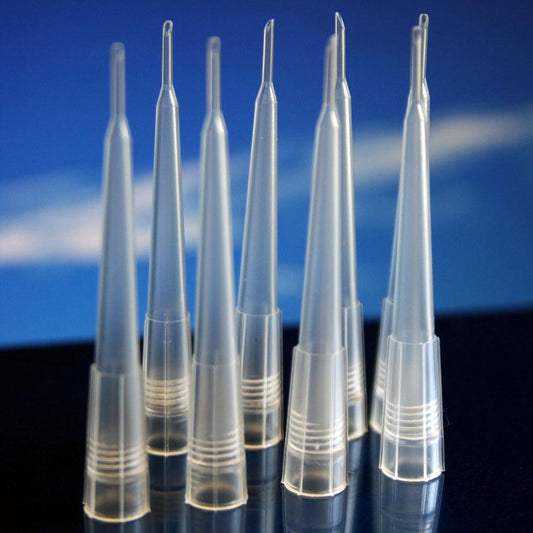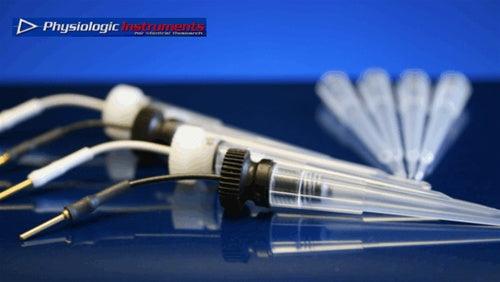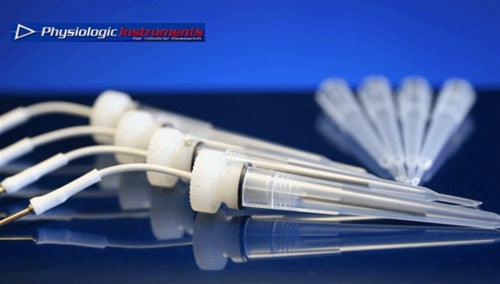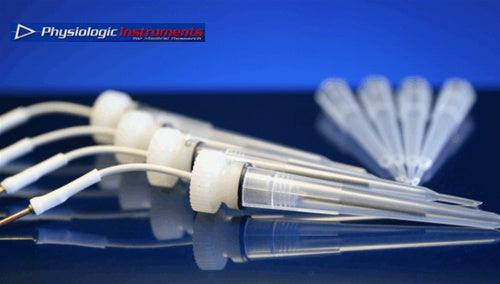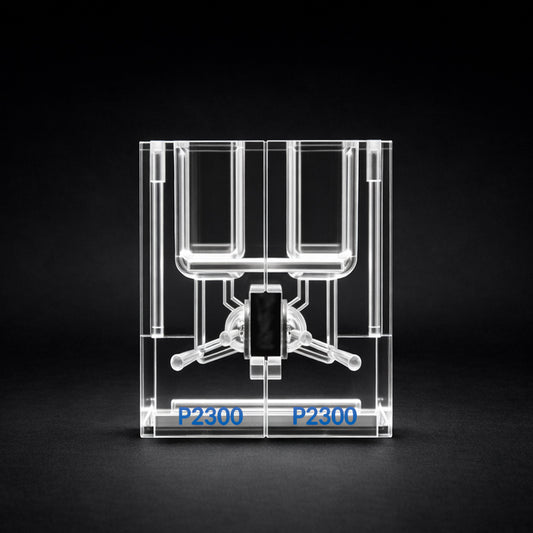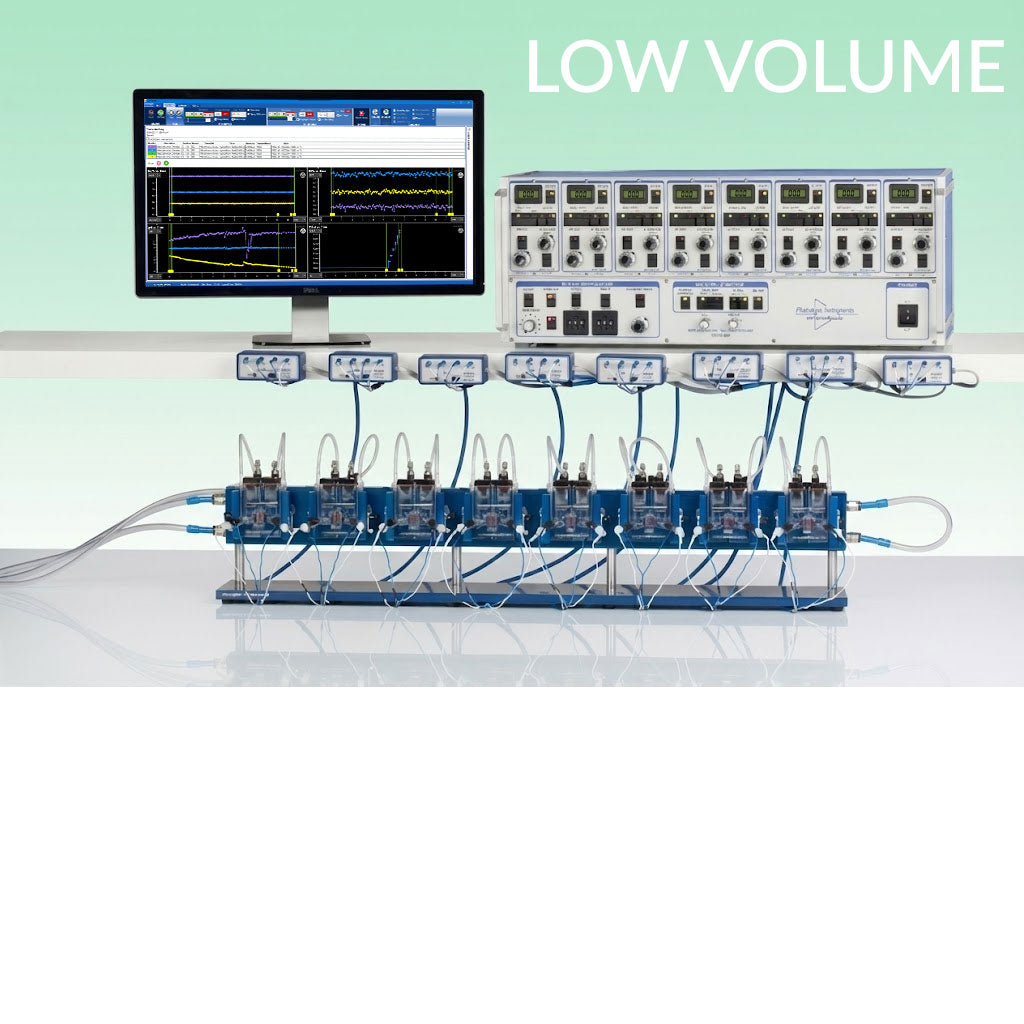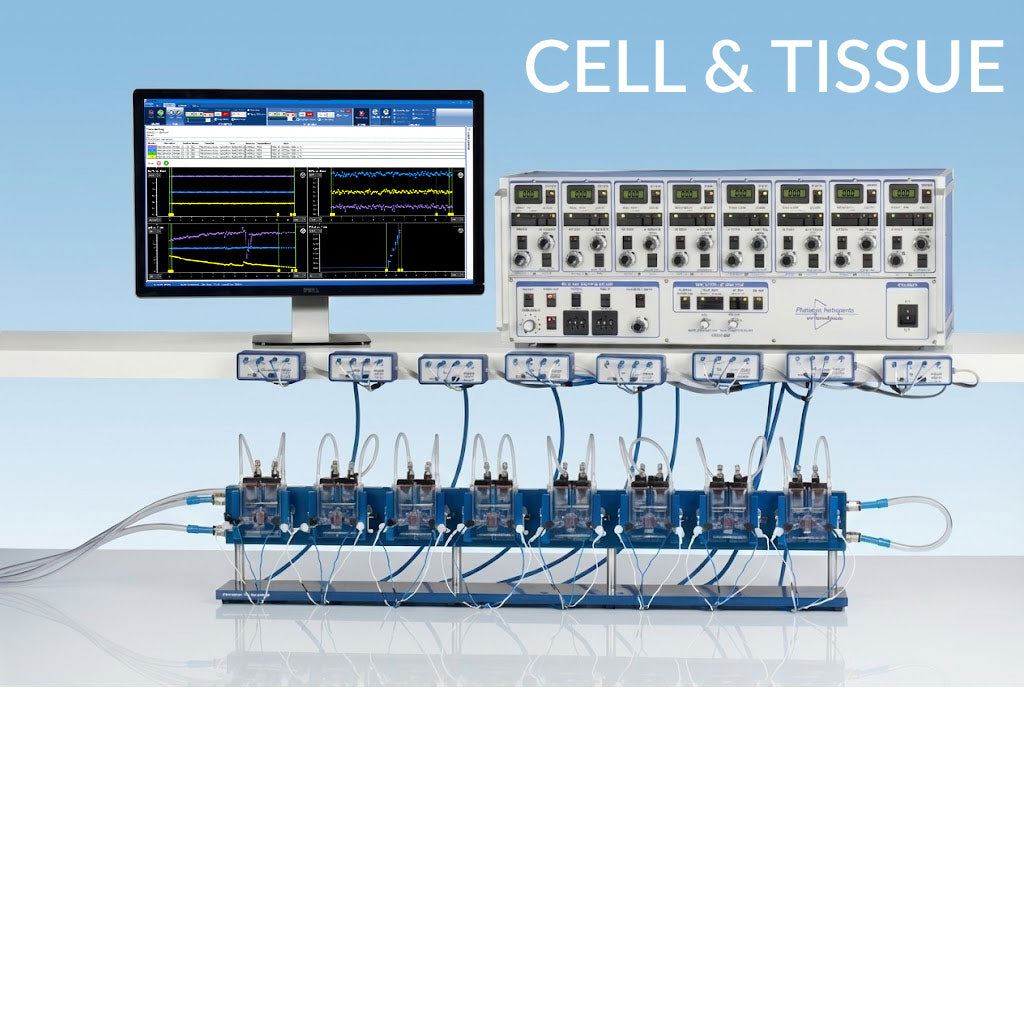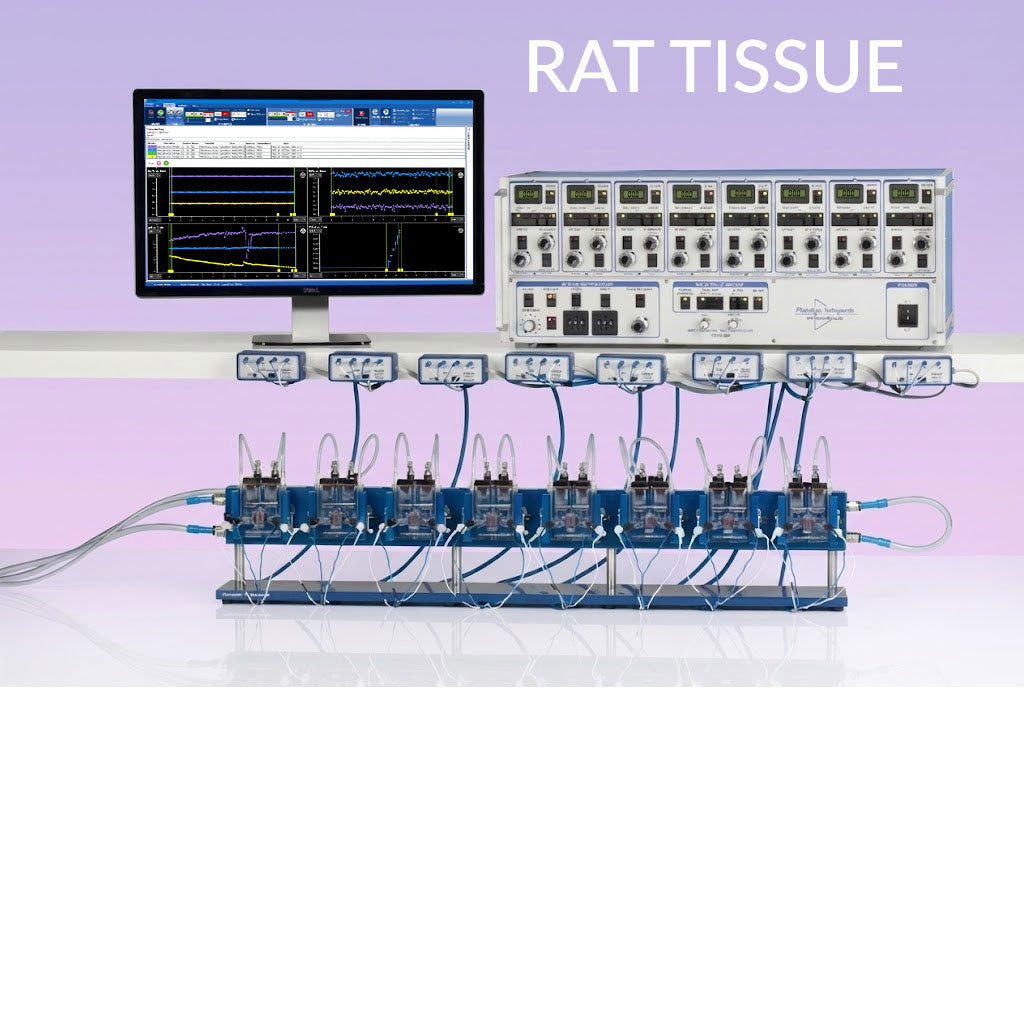Uso de sistemas de cámara
Se utiliza una cámara de Ussing para estudiar el transporte de solutos a través de una capa confluente de células. Esta capa suele ser una monocapa de células epiteliales que forman una barrera entre los entornos externo e interno del cuerpo, como los que recubren las vías respiratorias, el tracto intestinal y la vejiga, pero también podría ser una estructura de varias capas, como la piel o un cultivo celular en 3D o una capa confluente de células endoteliales como la barrera hematoencefálica en cultivo o el endotelio corneal. El transporte de soluto se puede determinar midiendo el flujo del soluto o, a veces, en el caso de solutos cargados como los iones, midiendo la corriente a través del tejido. Estos parámetros eléctricos, junto con la resistencia del tejido, sirven para evaluar el transporte de iones y la integridad del tejido.
Para realizar estas mediciones, los sistemas Ussing han sido diseñados para tener tres componentes principales; a saber, cámara Ussing, pinza de tensión/corriente y sistema de adquisición de datos.
1) La cámara de Ussing es simplemente un dispositivo que permite colocar el tejido entre dos compartimentos llenos de solución. La cámara puede estar equipada con electrodos para medir el voltaje y hacer pasar corriente a través del tejido.
2) La pinza de corriente de voltaje se utiliza para controlar el voltaje o la corriente a través del epitelio y así determinar elementos bioeléctricos como el voltaje transepitelial, la corriente de cortocircuito y la resistencia o conductancia.
3) Los resultados de las mediciones eléctricas se pueden registrar usando algo tan simple como un registrador gráfico o versiones electrónicas más nuevas de un registrador gráfico. Alternativamente, se puede recopilar mediante un sistema inteligente de adquisición de datos que actúa como un registrador gráfico pero también mide y traza la resistencia o conductancia del tejido en tiempo real, como Acquire & Analyse.
Sistemas Ussing con todas las funciones que se componen de nuestro sistema de cámara EasyMount Ussing, instrumentos de pinza de corriente de voltaje multicanal y paquete de adquisición de datos Acquire & Analyse junto con accesorios para establecer un sistema funcional casi completo. Estos sistemas están disponibles en versiones de 2, 4, 6 y 8 canales basados en una de las tres cámaras Ussing diferentes.


